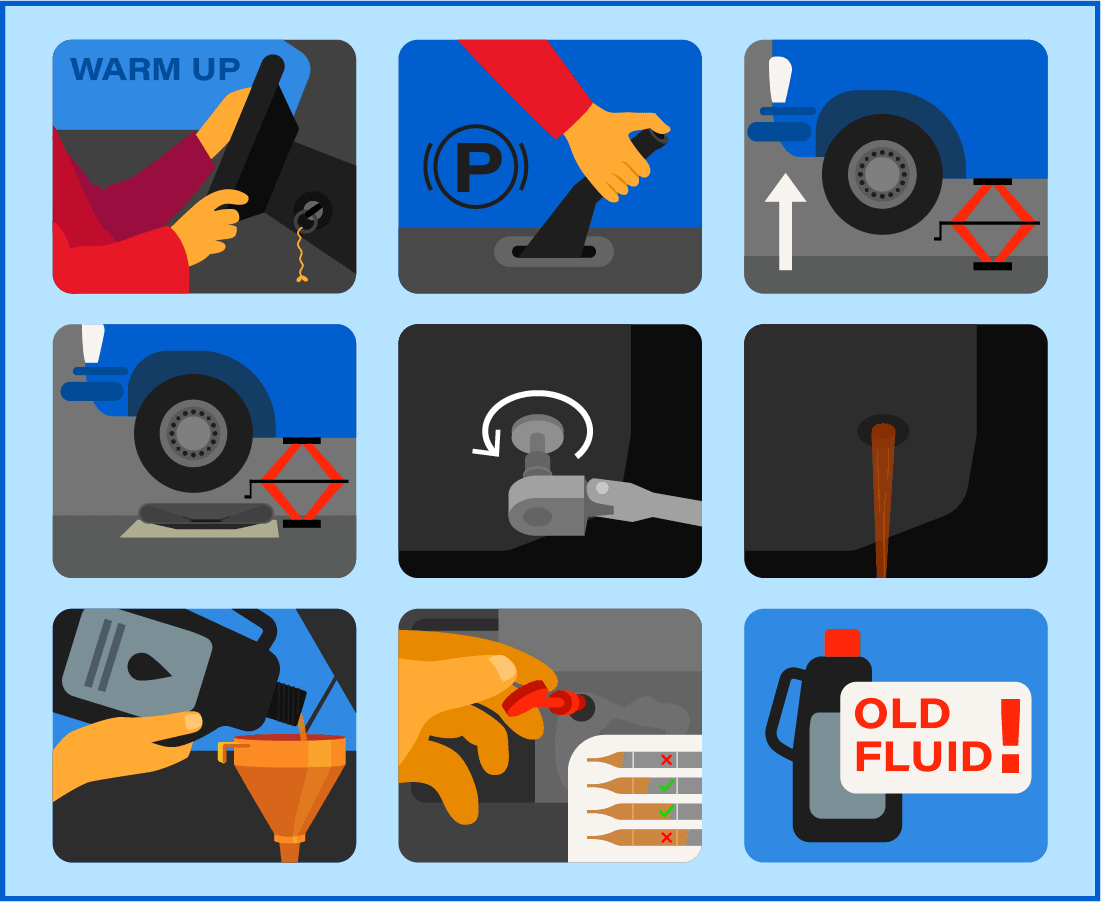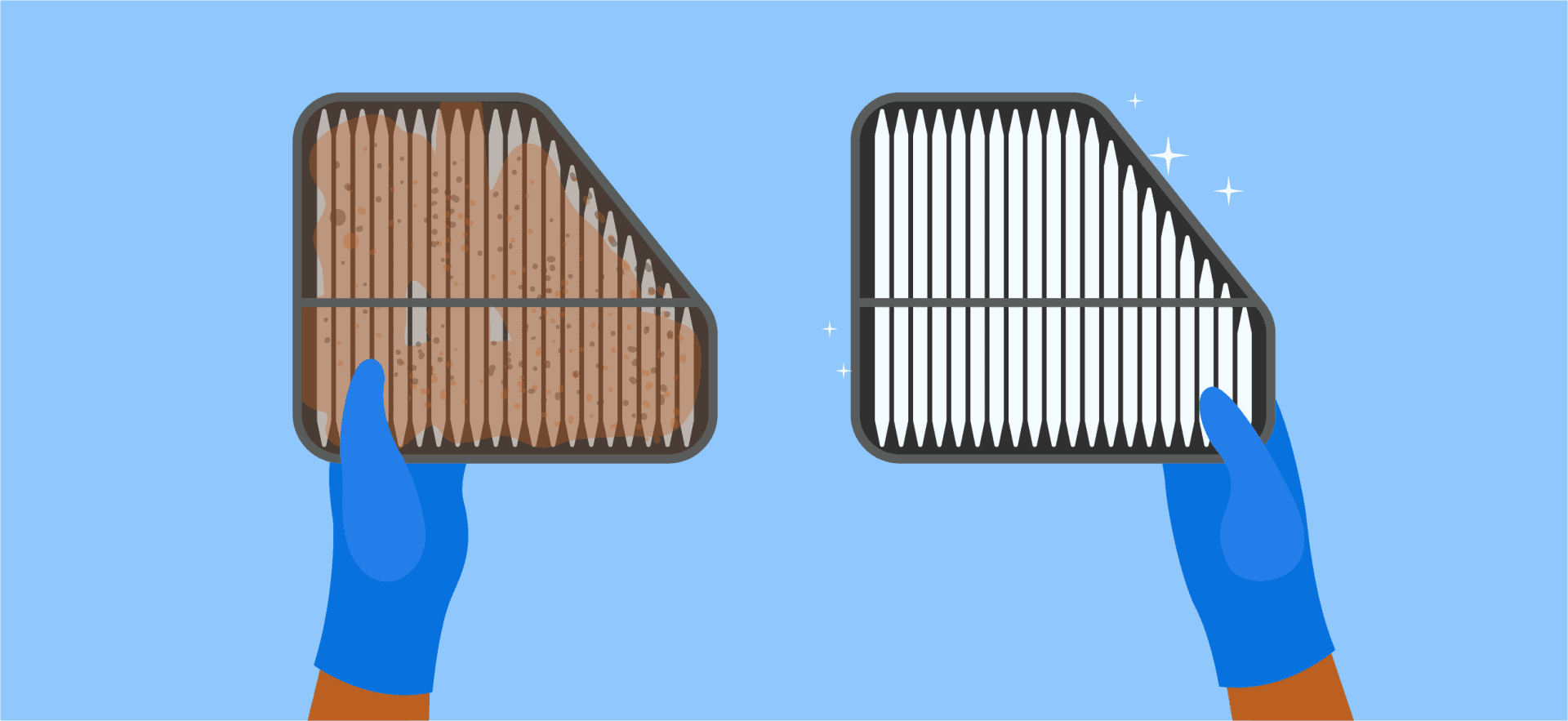What Is the Purpose of Automatic Transmission Fluid?

Transmission fluid is a vital lubricant that minimizes friction within your transmission by coating its moving parts. It serves a dual purpose: reducing wear and tear by lessening friction and ensuring that heat generated doesn’t accumulate. Specifically for automatic transmissions, this fluid plays a pivotal role by providing both hydraulic pressure and the necessary friction for smooth operation, as highlighted by the Universal Technical Institute.
Why Is Regular Transmission Fluid Change Essential?
While most vehicle owners recognize the importance of regular oil changes, the significance of a transmission fluid change often goes unnoticed. As FIXD puts it, “In the same way that your oil is the lifeblood of your engine, the transmission fluid is the lifeblood of your transmission.” Consistent maintenance ensures that harmful metal shavings and debris don’t accumulate. Neglecting this can lead to the fluid deteriorating to the point where it can cause severe transmission issues, potentially leading to catastrophic failure, as emphasized by The Drive.
The potential financial burden of a transmission replacement, which can run into thousands of dollars, underscores the importance of regular transmission fluid changes.
Traffic school can help you keep a clean driving record, prevent insurance increases, and more!
How Often to Change Automatic Transmission Fluid
A good rule of thumb is to consider a transmission fluid change every 60,000 to 100,000 miles. However, always refer to your vehicle’s maintenance schedule found in the owner’s manual for the most accurate guidance.

Understanding Transmission Fluid and Its Importance
Transmission fluid plays a dual role in your vehicle: it acts as a lubricant to reduce friction among moving parts and as a coolant to prevent overheating. Ensuring the fluid remains in good condition is pivotal to the longevity and performance of your transmission.
Key Indicators That Your Transmission Fluid Needs Attention:
- Color and Odor of Transmission Fluid: A simple way to gauge the health of your transmission fluid is by checking its color and smell using the dipstick, typically marked with a red handle. Fresh transmission fluid is bright red or green. As it deteriorates, it turns a darker brown shade. A burnt odor is a clear sign of aged or contaminated fluid.
- Unusual Transmission Sounds and Shift Patterns: Be alert to any grinding sounds or if the transmission shifts more roughly than usual. These can indicate inadequate lubrication due to low or deteriorated fluid.
- Lack of Drive Engagement: If you find that there’s a delay or lack of response when shifting into reverse or forward gears, it could be a fluid-related issue.
- Distinct Burning Smell: A burning odor while driving signals that the transmission components might generate excessive heat due to friction, often caused by low or poor-quality fluid.
- Unexpected RPM Spikes: If the RPM (revolutions per minute) surges unexpectedly before the gear shifts, it’s a potential sign of transmission fluid issues.
- Getting Stuck in a Gear: A transmission that doesn’t shift smoothly and tends to remain in one gear indicates a potential fluid problem.
How to Change Automatic Transmission Fluid
Note: Please keep in mind that this is an intermediate-level DIY auto maintenance project, so it’s not for everyone. If you’re not confident or experienced when it comes to car maintenance, we recommend leaving this task to a professional.

Essential Tools and Materials for a Transmission Fluid Change
- Transmission Fluid Funnel: A specialized funnel to help pour the transmission fluid without spilling.
- Drain Pan: To collect and dispose of the old fluid.
- Socket Set: Useful for removing the transmission drain plug.
- Torque Wrench: Ensures bolts are tightened to the manufacturer’s specifications.
- Jack and Jack Stands: To lift and safely support the vehicle.
- Protective Gloves: To keep your hands clean and safe from chemicals.
- Safety Glasses: Protect your eyes from any potential splashes.
- Rags or Shop Towels: For cleanup and to wipe any spills.
Choosing the Right Transmission Fluid
The type of transmission fluid you use is pivotal to the performance and longevity of your transmission. Always refer to your vehicle’s owner’s manual for the specific type of fluid recommended. Here are some general guidelines:
- Automatic Transmission Fluid (ATF): Most commonly used for automatic transmissions.
- Synthetic Transmission Fluid: Offers better temperature resistance and longevity compared to conventional fluids.
- Brand-specific Fluids: Some manufacturers may recommend specific brands or formulations for their vehicles.
Remember, using the incorrect fluid can result in reduced performance and potentially damage your transmission. If in doubt, consult a trusted mechanic or auto parts store.

Step-by-Step Guide to Changing Transmission Fluid in Automatic Vehicles
1. Warm Up Your Vehicle: Drive your car for about five or ten minutes to warm up the transmission fluid, ensuring it flows smoothly. Allow your engine to cool off for a few minutes afterward to avoid working with extremely hot components.
2. Prepare Your Workspace: Park your car on a flat, level surface like a garage or driveway. Engage the parking brake and remove the keys.
3. Elevate Your Vehicle: Jack up your car and secure it with wheel chocks or use steel wheel ramps if available.
4. Protect Your Work Area: Place a tarp or cardboard beneath your transmission to catch any potential spills.
5. Locate the Transmission Fluid Pan: Depending on your vehicle’s drive type, the position may vary. Consult your car’s manual if uncertain.
6. Precautions First: Before starting the actual process, wear protective gloves and safety glasses.
7. Drain The Old Fluid: Depending on your vehicle, you may have a drain plug or need to remove the entire pan. Ensure your drain pan is adequately sized to avoid messes.
8. Inspect and Replace the Transmission Filter: While it’s not mandatory every time, check the filter for damage and replace if necessary.
9. Ensure a Good Seal: Replace the O-ring/gasket on the transmission pan. Use oil-soluble grease to ensure a tight seal.
10. Refill with New Transmission Fluid: Position your car on level ground. Using a funnel, pour the recommended transmission fluid into the port.
11. Check Fluid Levels: After running your car for a few minutes, turn it off and check the fluid levels using the dipstick.
12. Check for Leaks: Place a fresh piece of cardboard under the transmission pan. If there are any leaks, address them before resuming driving.
13. Dispose of Used Fluid Responsibly: It’s essential to dispose of the old transmission fluid in an environmentally friendly manner. Check local guidelines or visit the Rislone blog for guidance.
Common Mistakes to Avoid
1. Overfilling or Underfilling:
- Why It’s a Mistake: Both overfilling and underfilling your transmission can lead to issues. Overfilling can cause the fluid to foam, which decreases its efficiency and can lead to transmission damage. Underfilling, on the other hand, might not provide adequate lubrication, leading to increased wear.
- How to Avoid: Always consult your vehicle’s owner’s manual for the correct fluid capacity. After filling, run your vehicle for a few minutes, then check the fluid level using the dipstick. Adjust as necessary.
2. Using the Incorrect Fluid Type:
- Why It’s a Mistake: Different vehicles require specific types of transmission fluid. Using the wrong type can reduce performance, fuel efficiency, and even damage the transmission.
- How to Avoid: Refer to your owner’s manual or consult with a trusted mechanic to ensure you’re using the recommended fluid for your vehicle.
3. Skipping Filter Replacement:
- Why It’s a Mistake: Over time, the transmission filter can become clogged with debris, reducing its effectiveness. Skipping its replacement can lead to decreased transmission performance and potential damage.
- How to Avoid: While you don’t need to replace the filter with every fluid change, it’s a good practice to check it each time and replace it if it shows signs of wear or clogging.
How Much Does It Cost to Change Automatic Transmission Fluid?

1. DIY Transmission Fluid Change Costs:
Estimated Expense: Changing your automatic transmission fluid at home typically costs between $51 to $100, based on data from Family Handyman. This cost encompasses the price of the fluid itself and any necessary tools or replacement parts you might not already have.
2. Professional Service Costs:
Estimated Expense: Opting for a professional transmission fluid change service may set you back anywhere from $150 to $200 on average. This cost covers the expertise of the mechanic, the fluid, and other service charges.
3. Cost Savings and Long-Term Benefits:
By learning to change your transmission fluid yourself, you could pocket a savings of approximately $100 to $150 with each change. Over the lifespan of a car—assuming it reaches up to 200,000 miles, as suggested by Progressive—this DIY skill could translate to total savings of up to $1,050, given a fluid change every 30,000 miles.
Top Automatic Transmission Fluid Brands We Recommend
A quality transmission fluid is more than just a routine purchase—it’s an investment in the longevity and performance of your vehicle’s transmission. By choosing the right fluid, you can potentially save thousands on future transmission replacements. Here’s our curated list of the top three automatic transmission fluid brands:
1. Royal Purple Max ATF High Performance Synthetic Automatic Transmission Fluid
While Royal Purple might be a premium choice, its quality justifies the price tag. Renowned for its low co-efficient friction and high film strength, this product effectively minimizes heat and wear on transmissions. Its standout feature? The oxidative stability, which surpasses many competitors, ensuring prolonged peak performance. Plus, its compatibility allows for blending with other fluids seamlessly. Users rave about its smooth shifting and improved temperature control, with one noting Royal Purple’s long-standing expertise in crafting industrial-grade lubricants.
2. Valvoline DEXRON VI/MERCON LV (ATF) Full Synthetic Automatic Transmission Fluid
Valvoline, often hailed as “America’s first motor oil brand,” continues its legacy with this top-tier ATF product. Designed to offer consistent shift performance across GM transmissions, it boasts benefits like extended fluid life, resistance to high-temperature breakdown, and reduced varnish and sludge accumulation. Its high oxidative stability matches that of the pricier brands. A user claims it’s the only genuine “full synthetic” Mercon LV available, reflecting its unmatched quality.
3. Mobil 1 112980 Synthetic Automatic Transmission Fluid
Budget-friendly doesn’t mean compromising on quality, as proven by Mobil 1’s ATF product. This fluid protects transmissions even under extreme temperatures, ranging down to a frigid -54 degrees Celsius. It not only extends transmission life by curbing wear but also maintains a clean transmission environment by resisting oil breakdowns and deposits.



































































































